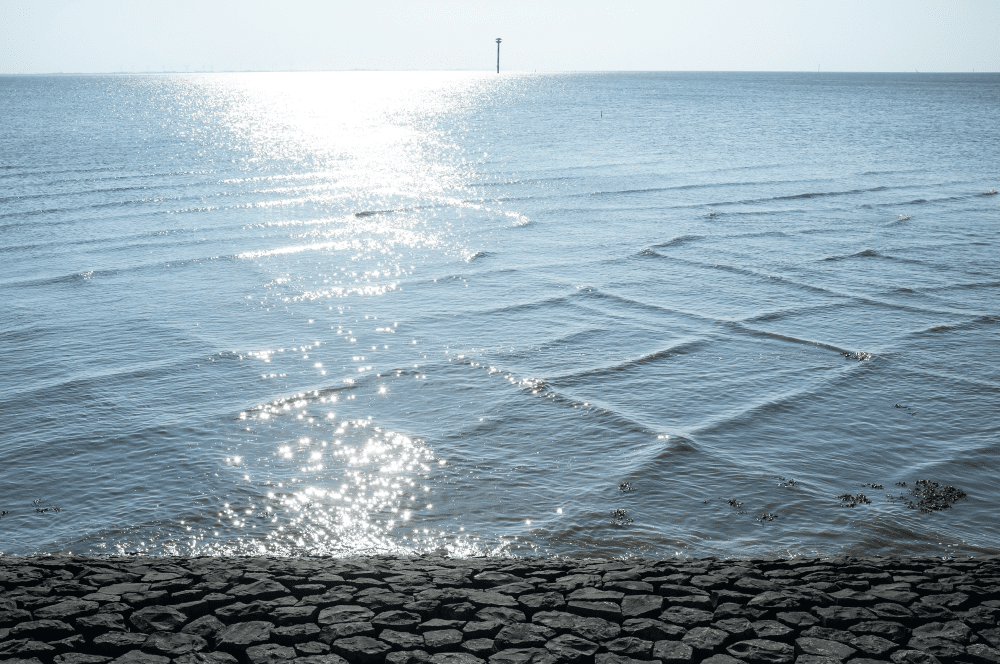When counteracting waves collide at a right angle, they can sometimes form square waves. The rare phenomenon is quite stunning to the observer, creating a chessboard-like pattern on the water’s surface that has made the Île de Ré near La Rochelle in France (pictured above) something of a tourist attraction. Here, people clamber up a lighthouse just to get a good look at the blocky waves.
Square waves have a pretty bad reputation online, but for coastal regions like this where the water currents aren’t too strong, they don’t usually pose too much of a threat to swimmers. It’s a very different story for ships out at sea, however.
What are square waves?
Square waves, also called a cross sea, form when waves moving in alternate directions meet at a right angle. They can be consistent and regular like those off Île de Ré where the conditions are ideal for a cross sea, or they can form spontaneously, lasting for just a few brief waves.
What causes square waves?
There are several reasons why they occur, but mostly it happens as the weather is pushing waves in one direction while the current is moving in another. Tropical storms can give rise to square waves as turbulent conditions send waves in opposing directions. Wind shears can also redirect waves, sending them crashing into waves that already formed and continued on in a different direction.

Square waves can be the result of normal conflicting currents or be born out of violent storms. Image credit: Koldunov Alexey
Are square waves dangerous?
In shallow waters where the currents aren’t strong, square waves don’t normally pose a danger to confident swimmers and sailors. However, you’re still dealing with opposing forces, so it might not make for the most relaxing day at the beach if you find yourself getting batted around by the waves – so it’s perhaps best just to enjoy them from a safe distance.
Rip currents that can suck swimmers out to sea are the real danger in wild swimming spots. They’re not so easy to spot, but there are signs you can look out for.
Where square waves really become dangerous is further out at sea, where the currents and water volumes of the counteracting waves can build up and cause severe rolling to vessels. This puts boats and ships at risk of taking on water and can increase the likelihood of an accident. According to Guardian, research has found that a disproportionate number of accidents happen in waters experiencing square waves, so evidently, they’re something to avoid in the open ocean.
Speaking of cool waves, did you know 2020 saw the largest rogue wave on record?
Source Link: Square Waves Are Seriously Bad News For Ships